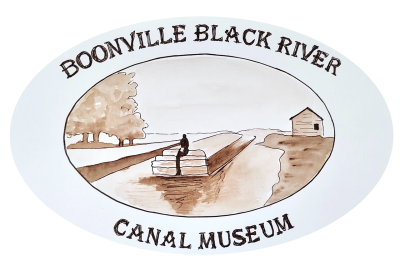History of the Canal


One of the most difficult undertakings in American navigation occurred here in the Black River Valley with the construction of the Black River Canal from the Mohawk Valley in Rome northward to Carthage. It was sometimes called “Little Ditch” in reference to the Erie Canal, which was often referred to as “Clinton’s Big Ditch.”
The Erie Canal was so successful that the same namesake, DeWitt Clinton, proposed a feeder canal to the Black River that would supply more water to the thirsty Erie at its high point in Rome. It would also provide a means to transport massive amounts of timber products from the untouched vast forests of the Tug Hill and Western Adirondacks.
Finally completed in 1855 from Rome to Lyons Falls after the tremendous effort of engineers and mostly Irish immigrants, it required 109 locks to traverse the 35-mile distance, a world record that still stands today.


Water was diverted from the Black River at Forestport into a feeder canal to the summit at Boonville. There, a third of the water flowed downhill to Lyons Falls to rejoin the Black River. The river was “canalized” so steam boats could tow canal boats hauling goods to and from Carthage 42 miles upstream.
The arrival of the long-awaited canal spurred the harvest of trees. Sawmills sprung up to turn the logs into lumber that was shipped down the canal to the growing areas of Albany and New York City. Villages along the canal, like Boonville, greatly benefited from this new influx of prosperity as businesses flourished.
As the forests were depleted, the amount of freight was significantly reduced. North Country goods and produce such as quarry stone, sand, cheese and butter, grain and especially potatoes took the place of timber but not to the extent that had been floated down the canal.


While the Delta Dam was under construction, business picked up with limestone and sand being carried down from Boonville. When that was completed, the state abandoned the canal in 1922. It was the longest surviving of the Erie Canal’s feeder canal systems.
The Black River Canal was unique in its unhurried approach. Canalers and lock tenders alike took a more leisurely view of this form of transportation than the operators of the feverishly paced big Erie Canal. It was more of a family or neighborhood affair on the Black River Canal where chances are you were related to many of the others plying the canal waters.
Remnants of the locks still remain along Rt 46, known as “The Gorge Road.” Three miles north of Boonville on Rt 12, a historical marker commemorating the canal is displayed where four locks can be viewed from a parking area with picnic tables.
Learn More
For more information about the lives and times on the Black River Canal, the following can be purchased from the Mercantile store at the Boonville Black River Canal Museum.
- “Black River Canal” by Edward P. Fynmore and Harney J. Corwin
- “Little Ditch, The Black River Canal” by R. David White and Matthew White (DVD and CD)
- “Snubbing Posts” by Thomas C. O’Donnell, a telling of first-hand accounts published in 1949 is also an excellent resource and may be found in used bookstores or online.

